A recent report from CBA economist Harry Ottley illustrated the unprecedented rise in non-market sector jobs over the past decade.
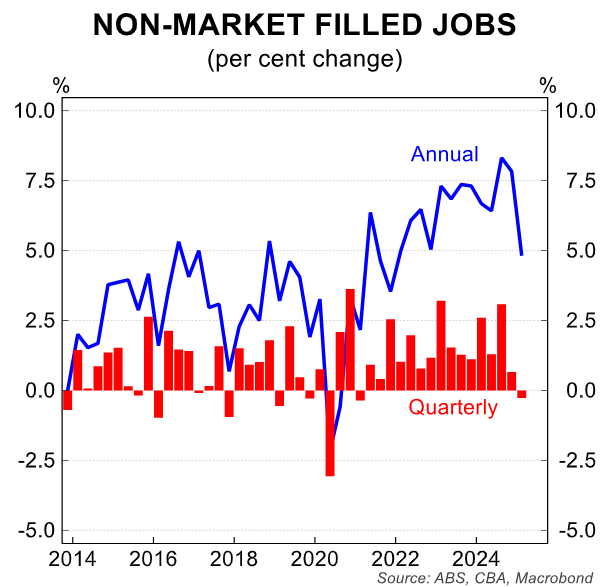
This sector includes the health care and social assistance, education and training, and public administration and safety industries. It includes both public and private service providers that rely on government funding.
The non-market sector has dominated job growth since the pandemic, accounting for 60% of total job creation:
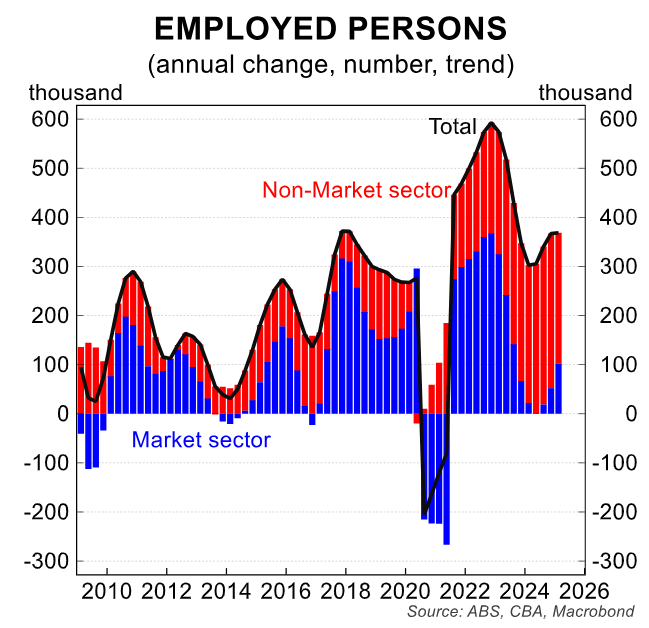
In fact, four out of five jobs created in the last two years have been in the non-market sector, driven by the $52 billion blowout in the National Disability Insurance Scheme (NDIS).
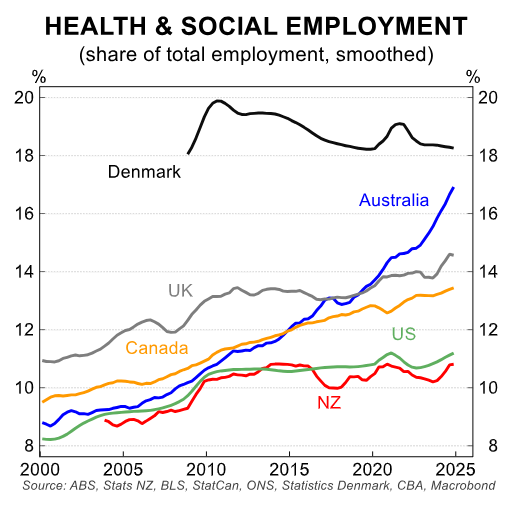
The following chart from Ottley shows that the non-market sector’s share of filled jobs has risen from around 25% fifteen years ago to 31.5% currently.
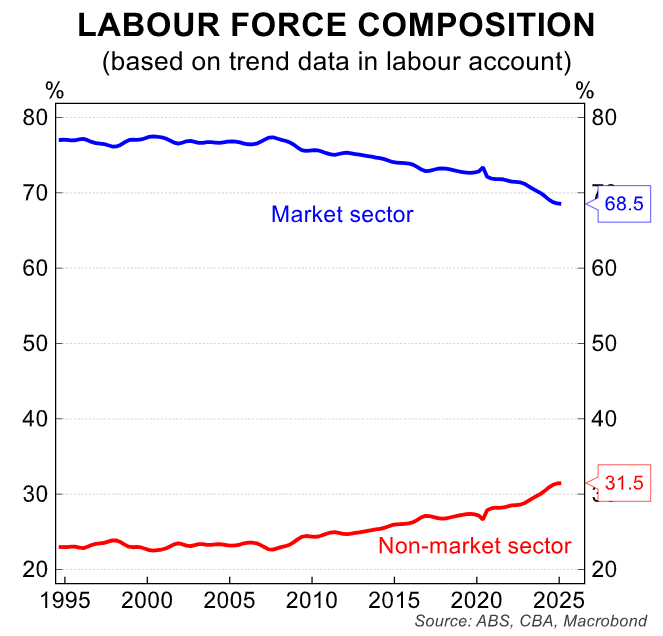
The health care and social assistance industry’s share of jobs has increased to 16%, up from 14% at the start of the pandemic and 10% twenty years ago.
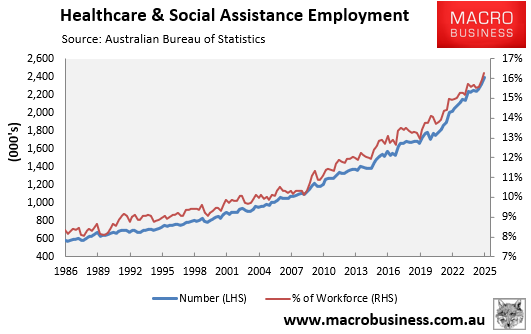
Justin Fabo from Antipodean Macro shows below that aged and disability carers have driven the increase in health care and social assistance jobs, mostly related to the expansion of the NDIS.
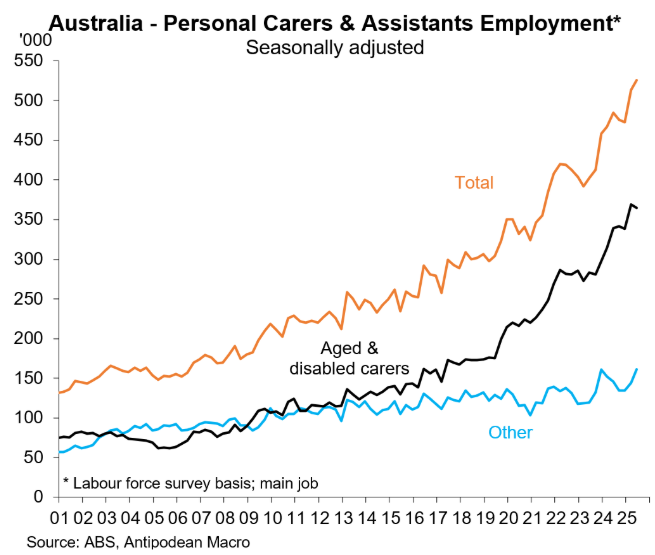
The Department of Employment & Workplace Relations has warned that a rapidly expanding ‘non-market sector’ presents a challenge for the federal government.
The department’s briefing for incoming Employment Minister Amanda Rishworth also noted that overall productivity growth has been impacted by the non-market sector’s increasing share of the economy.
“While the strongest employment growth in the past year has been in the non-market sector, non-market sector productivity is lower, on average, than productivity in the market sector”, the brief reads.
“As the non-market sector’s share of the economy has grown, this has impacted measures of overall productivity growth”.
IFM Investors chief economist Alex Joiner noted that “improved productivity driving real wages growth is crucial for sustained growth in real incomes” and said that Australia needed to “decide how much the care sectors should be allowed to weigh on productivity as these will need the ongoing support of government spending which needs to be sustainable”.
Indeed, the expansion of non-market jobs has helped to lower productivity growth across the economy.
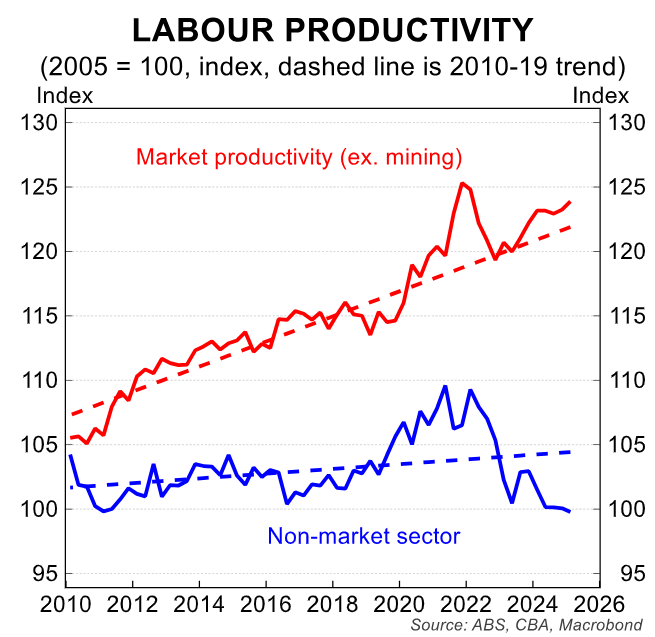
CBA’s Harry Ottley noted that industries like the NDIS that grow quickly “often draw in new, unskilled and inexperienced workers, creating a drag on overall measured productivity”.
With the NDIS projected to expand to around $100 billion annually within a decade, there is the clear and present danger that Australia’s productivity growth will be dragged lower, along with the federal budget.
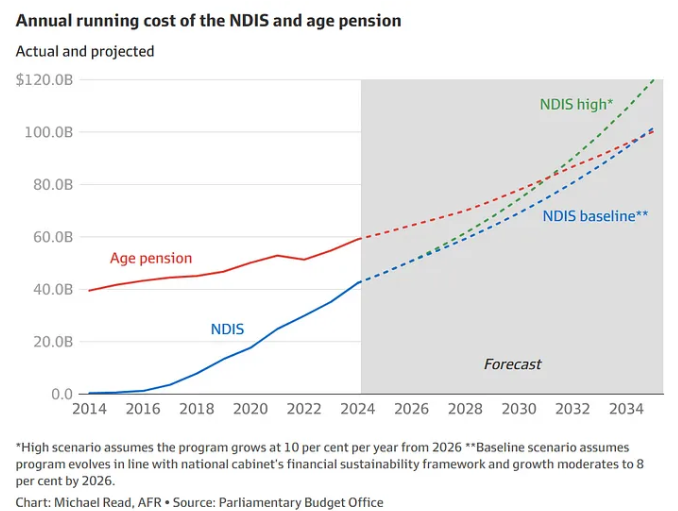
The NDIS is also the primary reason why Australia’s unemployment rate has remained at just 4.1%. The government job printer has been working overtime.

